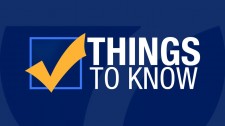
Miami, FL, June 29, 2016 (Newswire.com) - With the Open Enrollment coming up at the end of 2016, and insurance companies leaving the Affordable Care Act, people will be looking for new plans to give them health care coverage starting in 2017. There's 4 important things to know before people get their hands on any 2017 Obamacare Health Plan.
1. Household income and size are the number one thing that will affect the price of family's health insurance plan when applying for ACA Plans (Obamacare). By now everyone knows or should know that the Affordable Care Act's two main benefits, the subsidy (tax credit that is paid monthly to the health insurance company on behalf of the consumer) & Cost Share Reduction (the benefit that lowers out of pocket costs like the deductible, copay, and co-insurance) depend on how close the consumer is to the Federal Poverty Level (FPL). The FPL Starts at $11,770-$47,080 for an individual. Although this may seem simple many people enter this information wrong when completing their application on the marketplace website because it is based on the adjusted gross income (AGI) not the gross. Example: (using the FPL Chart) if a 40 year old male that is self employed made $40,000 for the year and entered their gross income instead of their AGI they would have paid $264.84 for a silver plan in the state of Florida but if the same consumer would have entered the correct AGI amount they would only have paid $129.03 and the deductible would have been lower.
2. Uploading documentation requested by the marketplace in order to qualify and keep the financial assistance (tax credit or subsidy) offered by the marketplace is the second most challenging obstacle when it comes to keeping an affordable health plan. If consumers do not send in the requested documentation to the marketplace Subsidies Can fall off. They are usually given 3 months to get this information into the marketplace. If they do not submit the documentation in time their subsidy will be cut off and they will be billed automatically by the health insurance company for the full amount. This could result in a consumer going from paying $20 a month to $300 or more a month.
3. After a consumer completes the application correctly Picking the right carrier in their local area is KEY. Picking the wrong carrier could result in a very small network and the consumer could struggle to find a doctor. It is mainly based on the county a consumer lives in. Example: a consumer may pick the most well known Insurance carrier but that carrier in their area may only have clinic use available to them for their primary care physician and that clinic may be overrun with patients while the smaller carrier could actually have 3000 primary doctors in their area an have a much more efficient network. HMOs are more restrictive (in some areas only have HMO's available), PPOs are more lenient at a higher fee, and POS plans make a good hybrid between the two. For cost-efficiency, seek options of an HMO, rather than a POS, and if the favored doctor still isn't covered, PPOs will offer maximum flexibility, but at a much higher cost. When choosing an HMO, people must stay in network to keep out of pocket costs down. All in all finding a great plan that is affordable with a good network is not so simple. ezHealthMart.com offers free assistance to consumers to help them figure out what might be best for them in their area.
4. In most cases If a consumer's employer offers them health coverage it is not wise for them to shop for individual coverage because they are not eligible for financial assistance (the subsidy) for a marketplace plan. The reasoning behind this is that in most cases the employer is paying for at least 50% of their employee's health plans. There is an affordability requirement set by the Affordable Care Act that must be met by employers. Plans must also meet minimum standards. An individual Obamacare health plan may benefit a person offered group coverage, as long as their group plan does not meet affordability, and or the minimum standards. As long as a job-based plan is considered affordable and meets minimum standards, individuals will not qualify for tax savings. It's always best for people to sit with a licensed agent who can assist with this calculation. There is a marketplace form that a consumer may provide to their employer to make sure that they're playing by the rules. The employer is required by law to fill it out right away and return it to the consumer. It is called the employer coverage tool and can be found on healthcare.gov. One thing many people don’t know is that there’s actually many ways to apply for Obamacare health insurance in the marketplace. There’s the Private Exchange or The Health Insurance Marketplace. A list of Pro's and Con's may be found on ezHealthMart.com
Source: BenaVest
Share:
